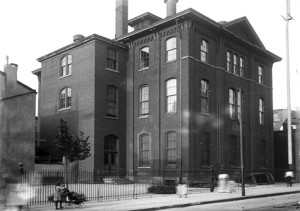 Education in Black & White: The Institute for Colored Youth and the Ongoing Struggle for Education
Education in Black & White: The Institute for Colored Youth and the Ongoing Struggle for Education
Education in Black & White is #10 in Moonstone’s Hidden History series. It continues Moonstone Arts Centers exploration of significant but under known people in American history. The timing is stimulated by the fact that: Judith Giesberg and her students at Villanova have created a wonderful website, A Great Thing for Our People, about the amazing teachers and graduates of the Institute for Colored Youth; the Library Company has mounted an exhibit, the Genius of Freedom: Northern Black Activism and Uplift After the Civil War and educational materials are available on line; History Making Productions has two films on the period, Tasting Freedom and the Floodgates Open; and Lindback Award winning educator Amy Cohen has created a curriculum guide to Tasting Freedom: Octavius Catto and the Battle for Equality in Civil War America. The first two weeks of October 2015 we will show the films and discuss Catto and the ICY at libraries and schools throughout Philadelphia and then have a four day symposium with lectures, discussions and a free teacher workshop as well as other programming.
The Institute for Colored Youth
 Founded by Richard Humphreys, a Quaker philanthropist with a bequest of $10,000 in 1837, “to instruct the descendants of the African Race in school learning, in the various branches of the mechanic Arts, trades and Agriculture, in order to prepare and fit and qualify them to act as teachers….” In 1852 the first Institute for Colored Youth opened at 716-718 Lombard Street and provided a classical education to young African Americans (with a curriculum including advanced mathematics, sciences, English, philosophy, various social sciences, and classical languages) with a faculty entirely of African American men and women. A new Institute for Colored Youth building opened on March 9, 1866, capable of holding twice as many students as the original school and had facilities such as a lecture hall and chemistry laboratory. In 1902 the Institute moved to George Cheyney’s farm, 25 miles west of Philadelphia, and afterward the name “Cheyney” became associated with the school.(Read More)
Founded by Richard Humphreys, a Quaker philanthropist with a bequest of $10,000 in 1837, “to instruct the descendants of the African Race in school learning, in the various branches of the mechanic Arts, trades and Agriculture, in order to prepare and fit and qualify them to act as teachers….” In 1852 the first Institute for Colored Youth opened at 716-718 Lombard Street and provided a classical education to young African Americans (with a curriculum including advanced mathematics, sciences, English, philosophy, various social sciences, and classical languages) with a faculty entirely of African American men and women. A new Institute for Colored Youth building opened on March 9, 1866, capable of holding twice as many students as the original school and had facilities such as a lecture hall and chemistry laboratory. In 1902 the Institute moved to George Cheyney’s farm, 25 miles west of Philadelphia, and afterward the name “Cheyney” became associated with the school.(Read More)
Fannie Jackson Coppin
 Born a slave in the nation’s capital, the child Fanny was purchased by an aunt. Another aunt took the little girl in, but Fanny had to go out and work as a domestic, getting schooling whenever she could. By age fourteen, she was supporting herself in Newport, Rhode Island, and struggling for education. “It was in me,” she wrote years later, “to get an education and to teach my people. This idea was deep in my soul.” She attended Rhode Island State Normal School and then Oberlin College, where her achievements were amazing. She was the first black person chosen to be a pupil-teacher there. In her senior year, she organized evening classes to teach freedmen.(Read More)
Born a slave in the nation’s capital, the child Fanny was purchased by an aunt. Another aunt took the little girl in, but Fanny had to go out and work as a domestic, getting schooling whenever she could. By age fourteen, she was supporting herself in Newport, Rhode Island, and struggling for education. “It was in me,” she wrote years later, “to get an education and to teach my people. This idea was deep in my soul.” She attended Rhode Island State Normal School and then Oberlin College, where her achievements were amazing. She was the first black person chosen to be a pupil-teacher there. In her senior year, she organized evening classes to teach freedmen.(Read More)
